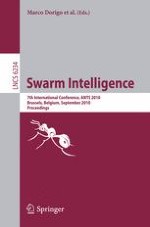2010 | Buch
Swarm Intelligence
7th International Conference, ANTS 2010, Brussels, Belgium, September 8-10, 2010. Proceedings
herausgegeben von: Marco Dorigo, Mauro Birattari, Gianni A. Di Caro, René Doursat, Andries P. Engelbrecht, Dario Floreano, Luca Maria Gambardella, Roderich Groß, Erol Şahin, Hiroki Sayama, Thomas Stützle
Verlag: Springer Berlin Heidelberg
Buchreihe : Lecture Notes in Computer Science
